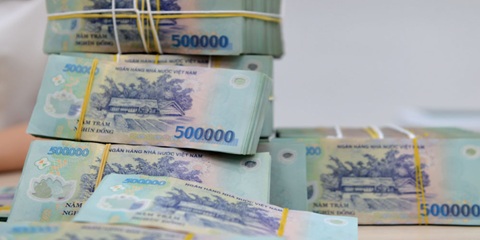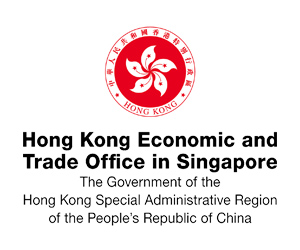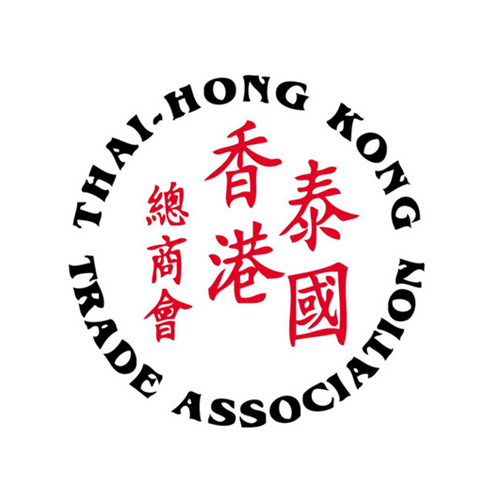Want to be in the loop?
subscribe to
our notification
Business News
GOVERNMENT COMMITS TO WIDE SUPPORT TOWARDS 2025
The government will continue to expand the fiscal policy in a bid to assist those struggling and to achieve the desired economic growth target for the year. Deputy Prime Minister Le Minh Khai last week reported to the National Assembly (NA) that the government will provide more practical support for the public and businesses as part of its agenda.
“The government will continue carrying out the policy of exempting and reducing lending rates from bank loans. It will also postpone and restructure debts, and exempt, reduce, and extend the payment of assorted taxes, fees, charges, and land rental for businesses and individuals so that they can soon escape from difficulties,” Khai stated.
He announced that the government will apply this fiscal policy in the latter half of 2024, with a total value of about $4.08 billion. VAT will continue at 8 per cent, and the State Bank of Vietnam has decided to increase the preferential credit package’s value for the forestry and fishery sector to $1.18 billion, and it is also formulating a similar package for the rice sector.
The Ministry of Finance reported that in 2023, the total values of all policies on exempting, reducing, and extending payment of assorted taxes, fees, and charges, as well as rental for land and water surface reached about $8.33 billion, including exemption and reduction of $3.3 billion and extension of just over $5 billion.
Last year, extending payment of VAT, corporate income tax, and personal income tax, as well as land rental led to a reduction in the state budget revenue of an estimated sum of $4.58 billion.
It is expected that a continued reduction of 2 per cent VAT for the second half of this year for most services will be discussed and adopted at the NA next month. It is also estimated that the total value of money from exempting and reducing assorted taxes and fees in the first three months of this year reached $858.3 million.
“The government will continue removing difficulties in access to bank loans for enterprises and individuals so that bigger credit flows can run into production and business activities,” DPM Khai stressed. “It is expected that credits will grow 15 per cent and the lending rates from bank loans will be reduced by 1-2 per cent this year.”
In addition, the government pledged that it will also continue cutting and reducing administrative procedures, and effectively renewing the one-door mechanism in addition to digitalisation of data and documents which will help truncate costs for the public and businesses.
Feasible answers required
The government told the NA that despite some positive signals, production and business activities have been facing great difficulties, with so many enterprises having left the market, meaning a decrease in employment and state budget revenues.
Figures from the General Statistics Office showed that last year, 89,100 businesses halted operations in Vietnam – up 20.7 per cent as compared to the previous year; 65,500 enterprises stopped operations and waited for dissolution procedures – up 28.9 per cent; and 14,400 enterprises completed such procedures.
“In the first four months of this year, nearly 86,400 enterprises were kicked out of the market, up 12.2 per cent as compared to the same period last year. On average, 21,600 enterprises faced such a plight every month,” stated a governmental report submitted to the NA.
Notably, in April, more than 7,600 enterprises halted operations – up 84.1 per cent on-month and 6.4 per cent on-year; 4,660 businesses stopped operations and awaited dissolution procedures; and over 1,340 enterprises completed such procedures.
The National Assembly Economic Committee has warned that if no more feasible solutions are applied soon, the number of such enterprises will continue increasing in the next months.
“We see that production and business activities remain bogged down in big difficulties. The number of enterprises leaving the market (86,400) has been greater than the number of businesses newly entering and re-entering the market (81,300),” said the committee at the NA.
“Low demands at the domestic and international markets, besides the low competitiveness of domestically produced products are among the main reasons behind the poor performance of enterprises operating in the manufacturing and processing sector,” the committee pointed out. “In addition, there has been high rises in transportation costs, especially by seas, coupled with the strong fluctuation in exchange rates since early this year; while enterprises are still struggling to meet many complicated administrative regulations such as anti-fire.”
Lack of guidelines
According to the Vietnam Association of Small- and Medium-sized Enterprises, hundreds of thousands of businesses have been facing many difficulties in meeting anti-fire regulations.
“Standards stipulated in 2020 on detailing a number of articles of the Law on Fire Prevention and Fighting are too high and improper, pushing up enterprises’ costs,” the association said.
At present, all factories and production workshops are required to use anti-fire materials. However, it is almost impossible for them to bring this into operation as these materials cannot be tested due to a lack of specific guidelines from authorised agencies.
“Under the regulations, all structures of the factories and workshops have to be painted with anti-fire paints. But the exact names of the paint and where the paint is sold or the thick of paint on the structures have failed to be specified,” said Nguyen Van Son, a lawyer at a law firm in Hanoi.
The government has pledged that it will strive to reach the economic growth target of 6-6.5 per cent this year via the boost of fiscal policy, including a preferential initiative worth $5 billion as low lending rates from bank loans for purchasing social houses and worker-oriented houses.
“Besides that, we will continue boosting the disbursement of public investment which will act as a primer for attracting private investment and increasing public-private partnership funding,” the governmental report read. “Efforts are to be made to reach a 95 per cent disbursement rate in public investment this year.”
Source: VIR
Related News

GOLDEN DEAL, KNOCK-DOWN OFFER
Are you ready for a fun-filled family vacation. Don't miss the super attractive Family Staycation package at Becamex Hotel. 2 days 1 night package with full amenities and free activities: Buffet breakfast, Swimming, tennis, bicycle, gym, sauna, cool ice cream, 300.000 VND service voucher and many other offers! Contact now for detailed advice.

"BEARY CHRISTMAS" CHARITY PROGRAM
As the Festive Season approaches, Caravelle Saigon, in collaboration with VinaCapital Foundation (VCF), is bringing a heartwarming charitable initiative to life — and we are delighted to invite all HKBAV members to take part in the very first “Beary Christmas” Charity Program. By adopting a Caravelle Bear for VND 299,000 nett, you will be directly supporting children battling cancer in Vietnam through VCF’s Can-Care/Can-Clover Program.

SOILBUILD INTERNATIONAL WINS “BEST INDUSTRIAL DEVELOPMENT” AWARD FOR SPECTRUM NGHE AN AT THE PROPERTYGURU VIETNAM PROPERTY AWARDS 2025
Soilbuild International is pleased to announce that its project, Spectrum Nghe An, has been awarded Best Industrial Development at the PropertyGuru Vietnam Property Awards 2025, held on 24th of October 2025, in Ho Chi Minh City. The PropertyGuru Vietnam Property Awards is part of the prestigious PropertyGuru Asia Property Awards series, the largest and most respected real estate awards programme in Asia.

WEBINAR: 2025 VIETNAM KEY TAX FINALISATION, UPDATES ON TAX CHANGES AND GLOBAL MINIMUM TAX
Dear Valued Client,We would like to invite you to our webinars on Friday, 12 December 2025, and Tuesday, 16 December 2025, to review and learn about key 2025 tax finalisation topics and stay ahead with the latest tax changes.

NEW ECONOMIC POLICIES EFFECTIVE THIS DECEMBER
Government Decree 304/2025, effective December 1, sets stricter conditions for seizing collateral, especially assets that are a borrower’s sole residence or essential work tools. In such cases, lenders must set aside a compensation amount equivalent to six to twelve months of minimum wage. The measure aims to improve transparency in bad debt handling and reduce credit risk in the banking system.

QUANG NINH TARGETS VND58 TRILLION IN TOURISM REVENUE
Quang Ninh Province is aiming to generate VND58 trillion in tourism revenue this year after surpassing its goal of 21 million visitors, driven by new tourism products, expanded nighttime activities, and large-scale events. As of mid-November 2025, Quang Ninh had welcomed 21.28 million visitors, up 12% year-on-year. Tourism revenue reached at least VND57 trillion, a 22.46% increase from the same period last year. With its visitor target achieved, the province is now pushing toward its revenue goal of VND58 trillion.
























